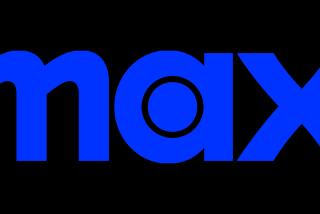Bank Ends Policy of Free ATMs for Everyone
- Share via
Washington Mutual Inc.’s free-for-all is about to become a free-for-some.
Seattle-based Washington Mutual has been one of the few big banks to give everyone no-cost access to its automated teller machines. But starting Nov. 17, people who don’t have Washington Mutual accounts will pay fees to use its ATMs, the bank said Tuesday.
The so-called ATM surcharge will be $1.50 in California and most other states, said bank spokesman Gary Kishner. The fee will be $2 in five states, including Nevada and Florida.
The bank instituted the no-charge policy five years ago, when it was expanding into new territories and wanted to woo customers with the convenience of its ATM network, Kishner said. He said the ATMs got plenty of use -- about 2.5 times more than the average bank ATM -- but that didn’t translate into more customers.
“People had access to our network, so they didn’t feel the need to move” their accounts, Kishner said. “We had long lines at our ATMs, and very few of those people were our customers.”
Washington Mutual customers will continue to have free access to the bank’s 3,539 ATMs nationwide. “This in no way affects our customers -- the only difference they’ll see is shorter lines at our ATMs,” he said.
Consumer advocates said the bank’s move was a disappointment but not a surprise.
“It’s another example of banks using fees to bolster their bottom line,” said Ken McEldowney, executive director of Consumer Action, a nonprofit organization in San Francisco. “It’s too bad because they were one of the few places people could go and not be charged a fee.”
Bankrate.com estimates that about 90% of financial institutions levy fees on noncustomers who use their ATMs. Bank of America Corp. and Wells Fargo & Co., Washington Mutual’s biggest competitors in California, charge ATM fees of $1.50 to people who don’t have accounts at their banks. The average ATM surcharge is $1.40, according to Bankrate.com.
“The ATM network is seen as a real selling point and another channel of interaction for existing customers,” said Greg McBride, a financial analyst with Bankrate.com. “But you don’t want to alienate your customers by charging a fee to use the network, so banks pass that cost on to noncustomers.”
Even so, nearly all banks charge transaction fees to their own customers when they stray and use the automated teller of a competitor. Washington Mutual already charges its own customers $2 when they use another bank’s ATM.
The new fee won’t have a significant effect on Washington Mutual’s earnings, said Jim Bradshaw, an analyst with D.A. Davidson & Co., a Montana-based investment firm.
Washington Mutual does not break out the amount it earns on ATM fees, but consumer banking fees as a whole -- for special services, bounced checks and the like -- generate about 15% to 20% of its income -- typical for most big banks, Bradshaw said. ATM fees are believed to account for just a small fraction of that income, he said.
“Most people will just stop using the ATM to not pay the charge,” Bradshaw said. On the other hand, noncustomers who became hooked on the ATMs when they were free might finally bring their business to the bank.
Bradshaw noted that the bank used the free ATM access “as a form of advertising, hoping that they could morph [users] into customers with the convenience of their ATM network.”
“They didn’t have great success with that approach,” he said. “But they may find that this forces folks to move.”
More to Read
Inside the business of entertainment
The Wide Shot brings you news, analysis and insights on everything from streaming wars to production — and what it all means for the future.
You may occasionally receive promotional content from the Los Angeles Times.










